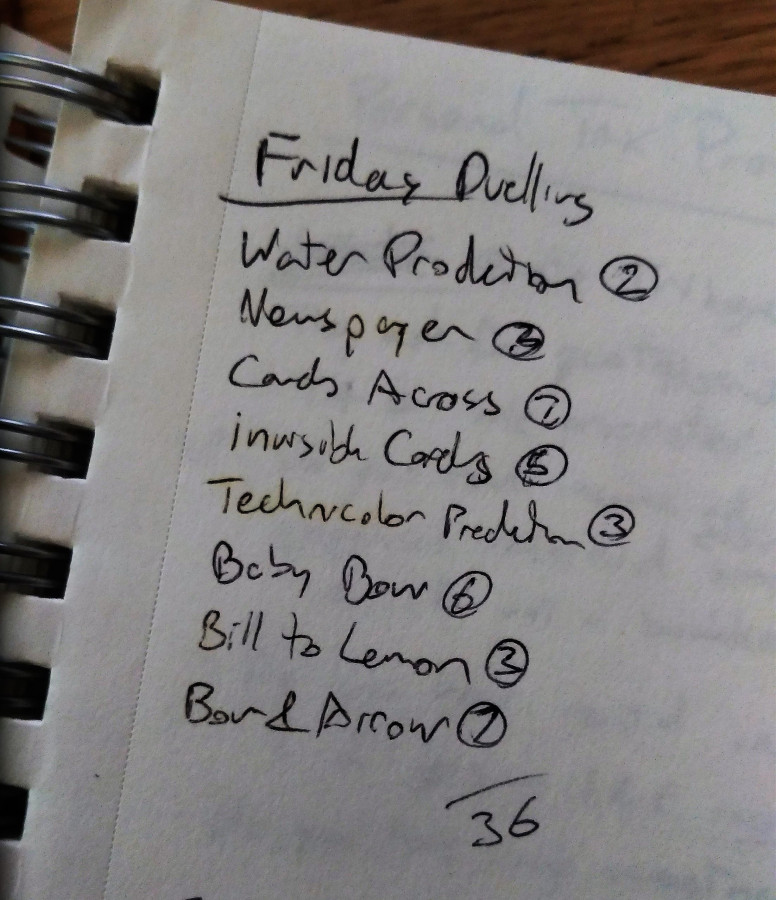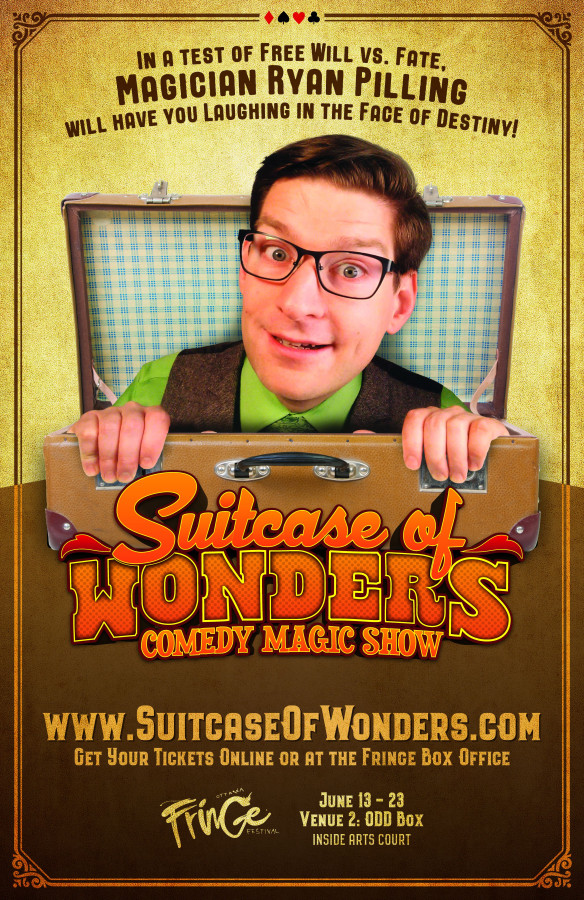
How do you normally plan your magic show?
I start with the tricks. I make a set list of tried-and-true routines. Begin with a proven opener, a big closer, and fill in the middle. I write the approximate time, in minutes, next to each item and keep adding routines until I hit the target show length.
It’s a quick, practical way to pick sort through your repertoire and pick the appropriate pieces for a gig. You have your set list for outdoor festivals, a set list for company banquets, and so on. When the name of the game is “commercial” entertainment, that’s how I do it.
Magic shows are notoriously frivolous. Like cotton candy, they deliver a burst of sweetness then fade away to nothing. What if you wanted to present a show with more substance? How do you pick a set list of magic with meaning?

In 2019 I presented “The Suitcase of Wonders” at the Ottawa Fringe Theatre Festival. My goal was to create a magic show which was truly theatrical. While the title was recycled, this new show was 80% created from scratch. It was an experiment to push myself as a magician, and performing artist.
I tried something I’ve never done before; I put the magic last.
The story came first. The dramatic journey, found at the core of every theatrical adventure, was my framework. I filled in my major plot points and had a first draft of my show written before I knew what tricks I might be performing.
My focus for this artistic experiment was to take my magician character on a real emotional arc. To be vulnerable, to show weakness, to give in to forces larger than myself and, in the end, triumph over chaos.
This video excerpt has our happy-go-lucky magician at his lowest point. He’s done with trying to do everything himself, and it sets up the transition to a show which tests fate against the free will of the audience.
During the run I was feeling like this cup routine was the weakest part of the show. It’s the part I worried about most each night. The part I would practice in the dressing room right before going on. I think it made me feel most uncomfortable because I was not hiding behind my usual goofy-magician self.
Now, with two years worth of emotional distance, I can look back on this piece as a strong point, or at least holding most potential. While it lacked polish, this may be a revelation of what it will take for me to make my magic more meaningful moving forward.
I find it interesting; in a cups and ball routine I never once say the word ‘cup’ or ‘ball’. In fact, I don’t really draw attention to the props at all. I’m not a magician doing a magic trick. I’m a human, expressing himself.
The routine bears little resemblance to any traditional cups sequence. The non-ending hangs awkwardly in the silence. However, it does seem appropriate to mark that moment of change in the story.
In developing this show, I had no intention of creating an original cup routine from the outset… or even including a cup routine at all.
I just followed the story.
This part of my story called for a sense of unknown, feeling tossed around, off-balance, not knowing what was next. I was struggling with making the right choice to win the game, to keep my eye on the prize.
I had defined the shape of the hole the magic needed to fill, and this hole looked a whole lot like three cups and a ball.
I had never performed the cups & balls in my regular repertoire. I think that unfamiliarity was helpful to provide a clean slate. Instead of falling into any well-worn groove I spent some time playing with the props. I created the kinds of movements which would best mirror the story. Neither the handling or the words was given too much control. I was seeking a compromise, a balancing point, between the two.
To put magic last means the magic illustrated the story, rather than the story justifying the magic. The trick was the final aspect given consideration.
In matching magic to the rest of my eight-point story structure, sometimes I was able to connect the dots to adapt my known repertoire. Other times I needed to create the magic from scratch. Most of these tailor-made tricks are so entwined in the plot they really can’t exist outside of this show. They aren’t the greatest tricks I can do, but they are the right ones for the moment.
If this sounds like a lot of work… it is!
The most difficult part was not creating original magic. Once I had the required parameters it came rather quickly. The real challenge was in finding a story I really wanted to tell.
That Fringe Festival run was only the first draft for this show. As always, I’m a magician in progress. There is much still to do. I’ll be refining the story, making it more meaningful, more impactful, to create a magic show worth remembering.
Creative Challenge: Put the story first, fill in the magic last.
Find a story worth sharing. Something that is meaningful for you, and you’re able to express this meaning to others.
Connect the dots with magic. What are the themes of the story? How can they relate to magic effects? Maybe an opportunity appears, a loved one vanishes, or your outlook on life changes?
Don’t force a pre-existing routine onto your story. Ask yourself “what if?” questions to create effects. You don’t need to know your method. That can come later.
Finally, balance the story with the magic such that your movements and speech are never fighting each other. The words change to fit the action, and the magic adapts to the story.
And with that, you’ll make magic with meaning.